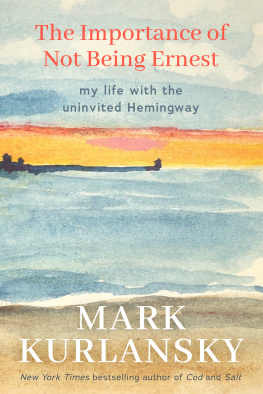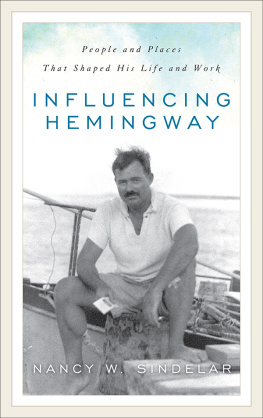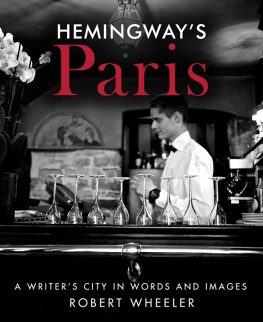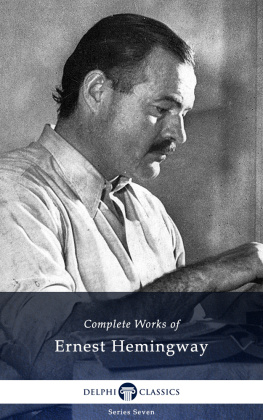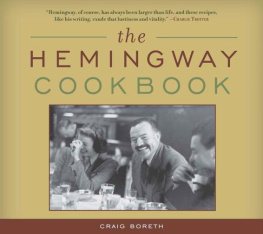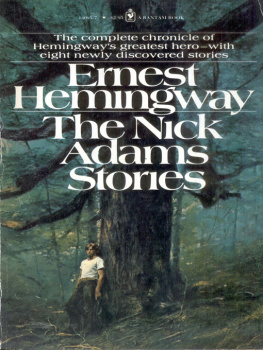



Published by The History Press
Charleston, SC
www.historypress.com
Hemingways Sun Valley: Local Stories behind His Code, Characters, and Crisis
Copyright 2020 by Phil Huss
All rights reserved.
Front Cover: Hemingway with a stringer of mallard ducks after a morning of hunting on Silver Creek. Magnum Photos.
First published in 2020
E-Book year 2020
ISBN: 978.1.43967.063.7
Library of Congress Control Number: 2020934329
Print Edition: 978.1.46714.581.7
Notice: The information in this book is true and complete to the best of our knowledge. It is offered without guarantee on the part of the author or The History Press. The author and The History Press disclaim all liability in connection with the use of this book.
No part of this book may be reproduced or transmitted in any form whatsoever without prior written permission from the publisher except in the case of brief quotations embodied in critical articles and reviews.
CONTENTS
DEDICATION
What do you value most?
Ernest Hemingway in A Farewell to Arms
My answer:
My love for my wife, Chrissie, and our two children, Nils and Gretel.
ACKNOWLEDGMENTS
My first acknowledgment of gratitude must be for my wife, Chrissie, whose enduring love and support mean everything to me.
Of course, I am grateful to Ernest Hemingway for providing such wonderful short stories and novels that inform my thinking and enhance my classroom discussions. And I am grateful to him for showing us all how to balance life of the mind and a life of adventure.
I am indebted to writers and researchers who have allowed me to bring the Idaho Hemingway stories to life: Lloyd Arnold, Tillie Arnold, Dorice Taylor, and Larry Morris.
I am also indebted to The Community Library of Ketchum, Idaho and the support of the librarys executive director, Jenny Emery-Davidson, and regional history director, Mary Tyson. Mary provided an archive of interviews with local friends, hunting partners, and acquaintances of Ernest Hemingway, and these proved to be rich ore.
To publish this book, I had to demonstrate local support from vendors. The following individuals generously provided financial support by purchasing advanced copies of the book: Terry Ring of Silver Creek Outfitters, Whit Atkinson of Atkinsons Market, Jenny Emery-Davidson of The Community Library, Ben Pettit of Sun Valley Community School, Scott Schnebly of Lost River Outfitters, and Dave Whorton of the Tugboat Institute. This outpouring of support from owners of local businesses and nonprofits was both encouraging and edifying and proved to be one of the best parts of the process of writing and publishing this book.
I also appreciate John Lundin, who after listening to my lecture at The Community Library on the Hemingway code in the Idaho stories, recommended my book to Arcadia Publishing and The History Press. And I am appreciative of my editor, Artie Crisp, for taking an interest in my work.
Finally, I am forever grateful for my students at Sun Valley Community School for sustaining my love for the life and works of Ernest Hemingway through lively discussions. And I appreciate their collaboration with me in distilling the principles of the Hemingway heroic code through nearly twenty years of reading their English papers on Hemingway.
PREFACE
A hell of a lot of state, this Idaho, that I did not know about, remarked Ernest Hemingway during his first visit to Sun Valley in 1939. Coming back from a pronghorn hunt in the Pahsimeroi Valley and looking back at the Sawtooth Valley and the headwaters of the Salmon River from atop Galena Summit, Hemingway also told a hunting companion, Youd have to come from a test tube and think like a machine to not engrave all of this in your head so that you never lose it.
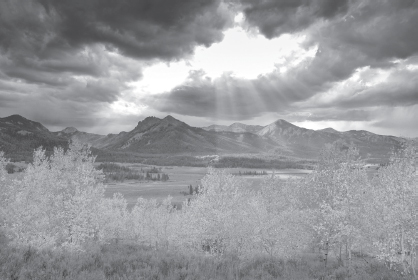
THE VIEW FROM GALENA SUMMIT: THE SAWTOOTH VALLEY AND THE HEADWATERS OF THE SALMON RIVER By Charles Knowles - Flickr: Galena Summit Idaho, CC BY 2.0 https://commons.wikimedia.org/w/index.php?curid=19829662.
Agreed. I have lived in the Wood River Valley (home to the towns of Sun Valley, Ketchum, Hailey, and Bellevue) for twenty years at the writing of this book. I have run many of its rivers, backpacked through many of its mountains, hunted ducks on Silver Creek, and fished lots of its waters, but I still know there is a hell of a lot of Idaho that I do not know about. But I do know that both Ernest Hemingways legacy and the impression this vast, wild country of Idaho leave upon us are deeply engraved indeed. Hemingways cultural legacy is alive and well in the Wood River Valley. There is an annual Hemingway Festival each September at The Community Library in Ketchum, and it attracts scholars, indebted authors, friends of the family, and general readers from all over the globe. Sun Valley Lodges suite 206, where Hemingway wrote chapters of For Whom the Bell Tolls, is a destination for Hemingway enthusiasts, his bust on Trail Creek Memorial, with his eyes looking out over the trout stream and the cottonwoods, honors his love of the area, and his grave in the Ketchum Cemetery is surrounded by the graves of his wife, Mary, his children, and his closest hunting companions and friends. A monument to his hunting adventures on Silver Creek has the epigraph to The Sun Also Rises etched into it. His house just outside of the mountain town of Ketchum remains in almost the same condition as when Ernest tragically ended his life there on July 2, 1961.
I came to know Hemingway as a young man when I read his Old Man and the Sea at the age of nine. It was my first real book. As a boy who would often disappear alone with a fishing rod and a faded, yellow bucket to ply the streams of western Pennsylvania for fingerling trout, the story of catching a giant marlin was a marvel. After moving to the Wood River Valley in 2000 to teach English at Sun Valley Community School, an independent school, I taught and still teach a course called Hemingway. In this course, we read a wide selection of his short stories and novels: In Our Time, The Sun Also Rises, A Farewell to Arms, For Whom the Bell Tolls, and The Old Man and the Sea. We also study the local stories about Hemingways time in Sun Valley as windows into understanding the characters in his most famous texts. This is the subject matter of this book.
Ernest Hemingway lived a larger-than-life existence everywhere he went: Italy, France, Spain, Key West, Africa, Cuba, and Sun Valley, Idaho. Ambulance driver in World War I, journalist in the Spanish Civil War, correspondent in World War II, novelist, hunter, and fisherman, Hemingway was a man of action and was happiest combining his love of writing with his love for adventure. Some of his happiest days were here in Sun Valley, where he wrote a significant portion of For Whom the Bell Tolls and hunted with a group of local hunting guides. Why was Hemingway here in Sun Valley? What were his days like? And how does his life in Idaho help us understand some of the seminal novels and stories of the twentieth century?
Next page



